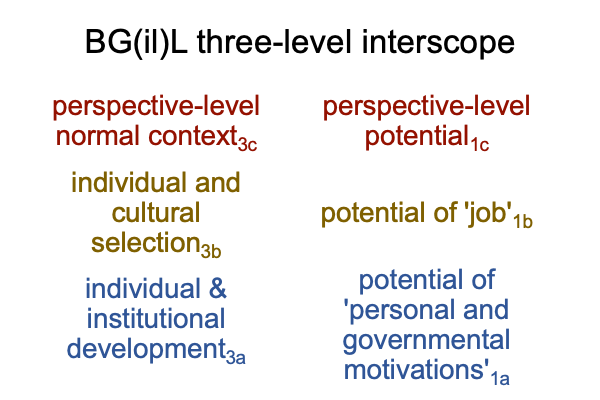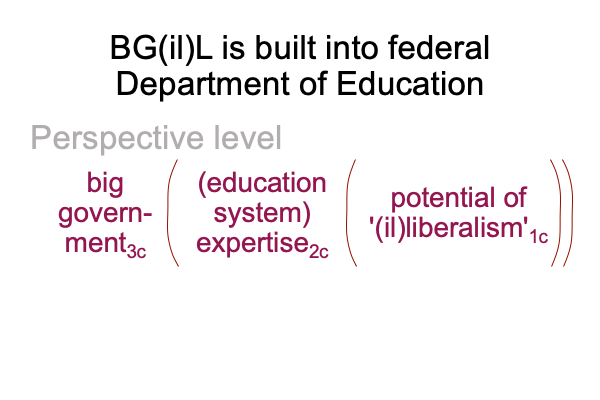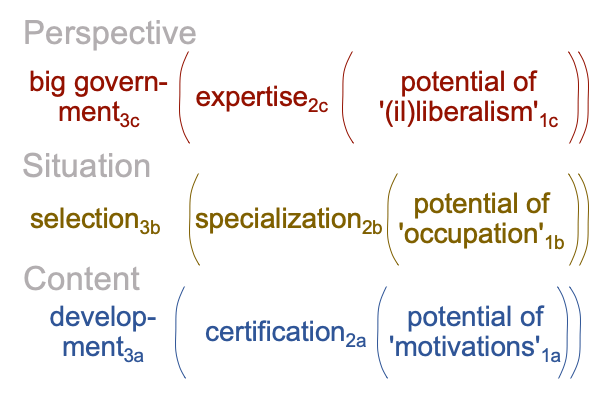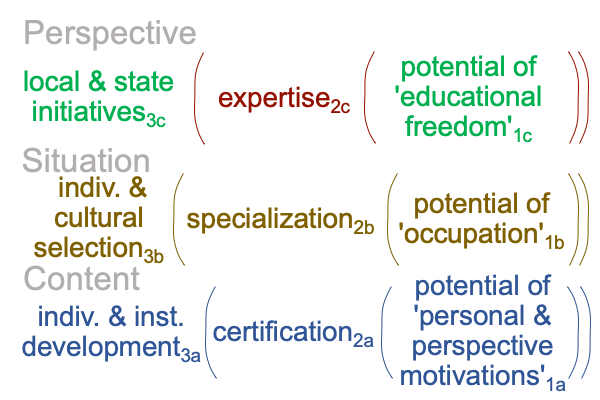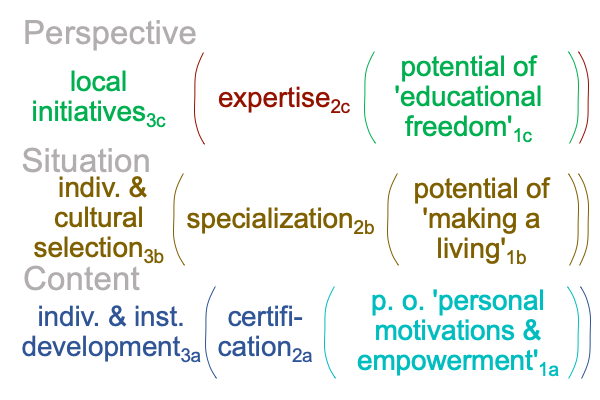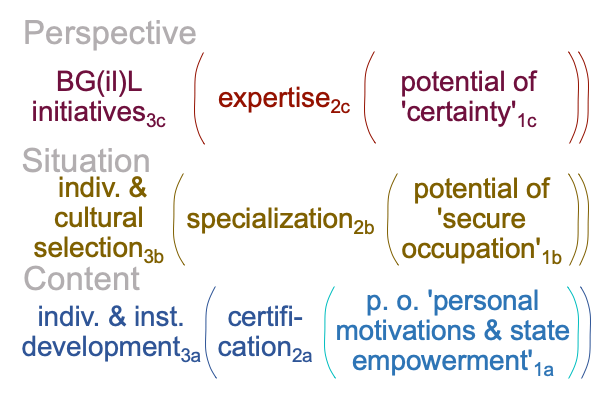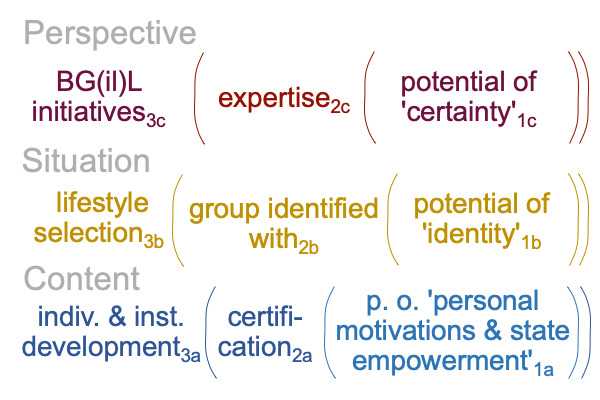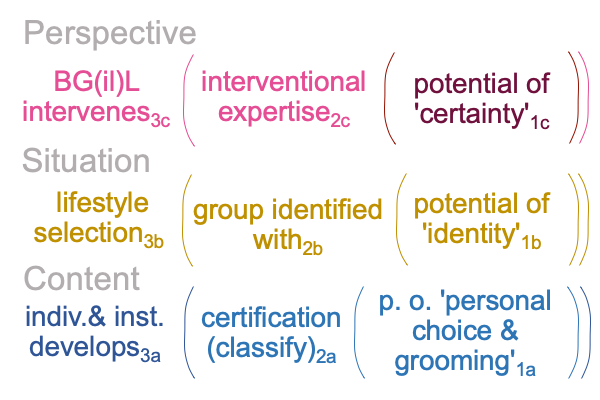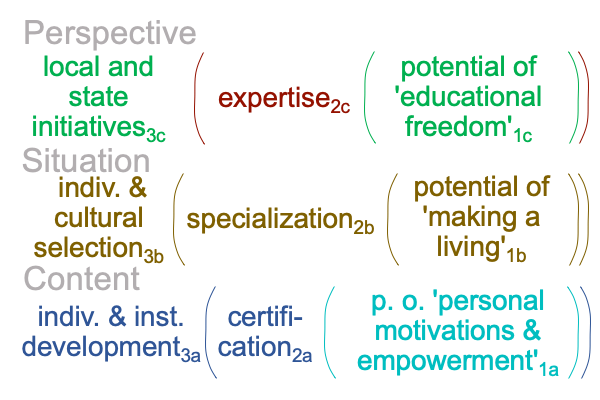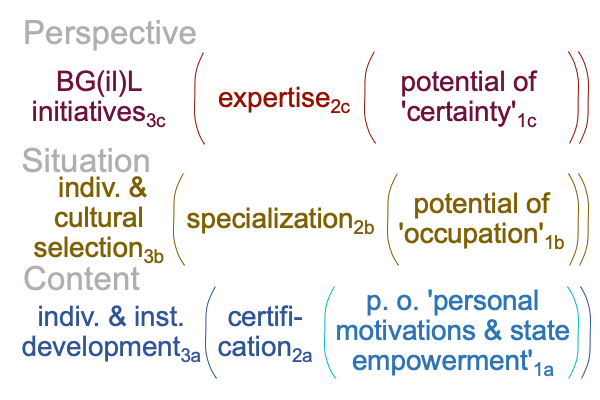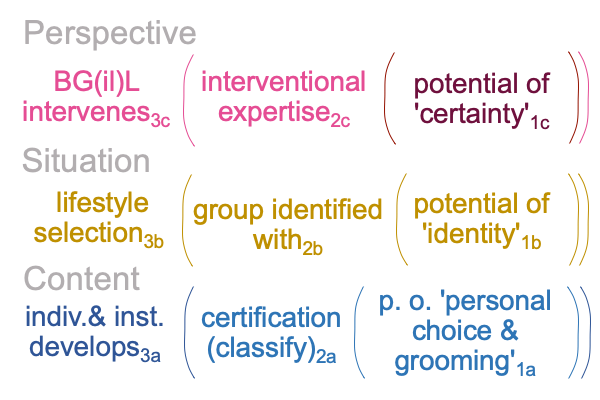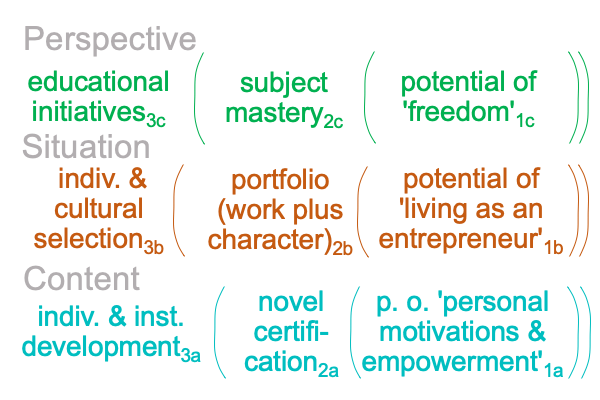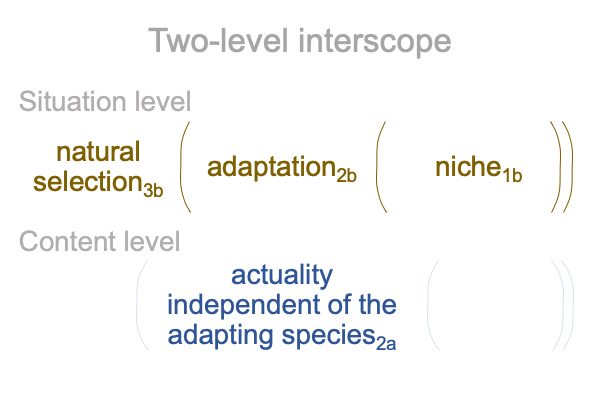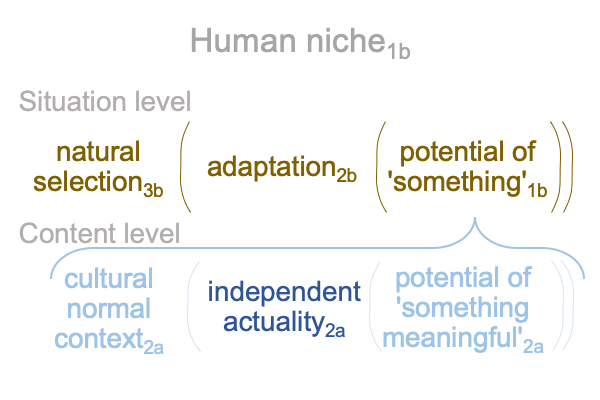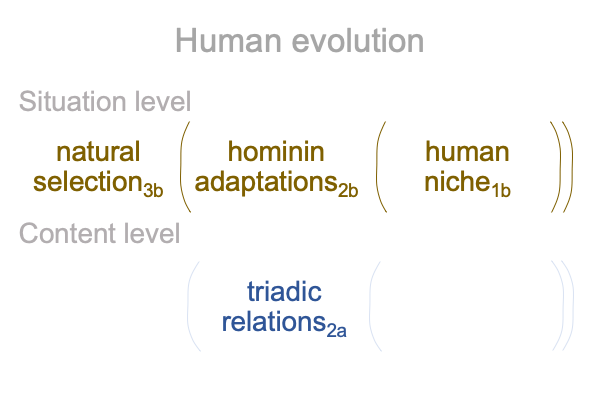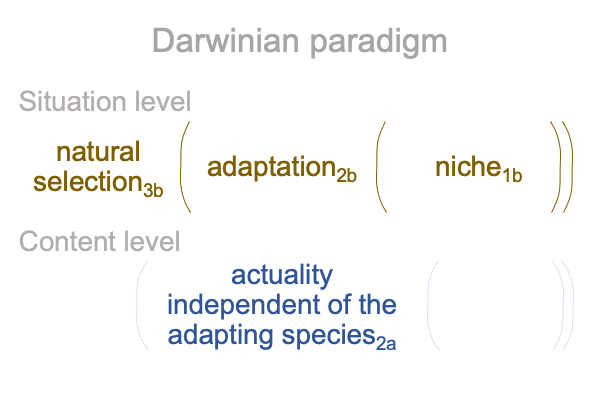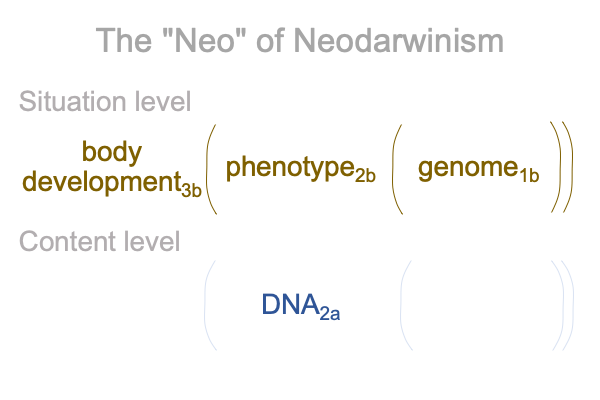Looking at Betsy DeVos’s Book (2022) “Hostages No More” (Part 2 of 8)
0005 How to begin?
Here is how Looking at Heather Heying and Bret Weinstein’s Book (2021) The Hunter-Gatherer’s Guide to the 21stCentury ends. A BG(il)L education system may be depicted as a two-level interscope. The two level interscope is introduced in A Primer on Sensible and Social Construction (by Razie Mah, available at smashwords and other e-book venues). A two-level interscope associates to sensible construction.
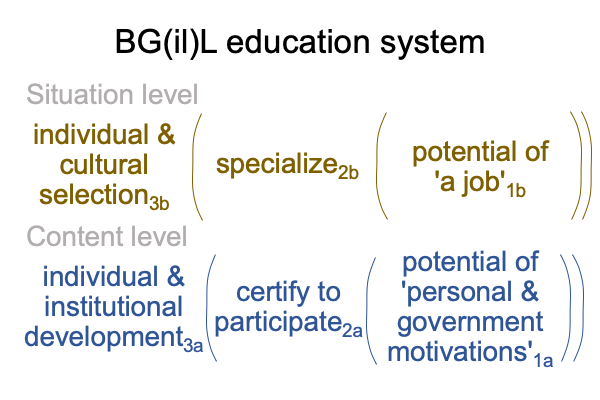
0006 On the content level, the normal contexts of individual and institutional development3a bring the actuality of certification2a into relation with the potential of ‘personal and government motivations’1a. Note that the individual and the institution belong to the normal context3a and potential1a, implying that the individual adopts motivations promulgated by the state. There is word for the condition where a person adopts the motivations of a governmental system in order to get ahead (in this case, certified2a). Dare I say the colloquial version of that word?
0007 On the situation level, the normal context of individual and cultural selection3b brings the actuality of specialization2b into relation with the potential of ’employment’1b. This implies that ‘a job’ conveys the potential of the entire content level nested form. What might be an alternative? How about ‘character development’?
With that idea in mind, take a look at the normal context3b once again. Both individual and cultural selection2b endeavor to fill specialized2b jobs1b with individuals willing to (dare I say the word?) to government systems in order to get ahead. Perhaps, I can call the process, “unnatural selection”.
0008 Who would volunteer to become hostages… er… collaborators to such a system?
Betsy DeVos’s political adversaries.
Indeed, they would volunteer every child to become a hostage in their BG(il)L system. After all, being a hostage is good for them. Being a hostage turns them into collaborators (rather than sovereign individuals). Being a hostage2a is the pathway to getting a job1b.
0009 The BG(il)L system is not about character development, which requires guidance. It is all about expertise, which requires instruction. Experts are specialists2b. Experts are certified2a to participate in particular occupations1b. Specializations2b virtually situate certification2a.
The two-level operation appears sensible. DeVos talks about mastery of subject. Is that the same as expertise? These terms belong to a level that does not appear in the above figures. The perspective level only becomes visible when the content and situation levels fail. Is the above sensible construction failing? Well, I already know that it fails anyone who does not want to conform their personal motivations1a to the desires of the state1a in order to get a job1b.
0010 Does this fit with DeVos’s storyline?
I think so. DeVos writes as if she holds a perspective-level solution to mandatory BG(il)L education systems. Subject mastery2c is not the same as expertise2c.


